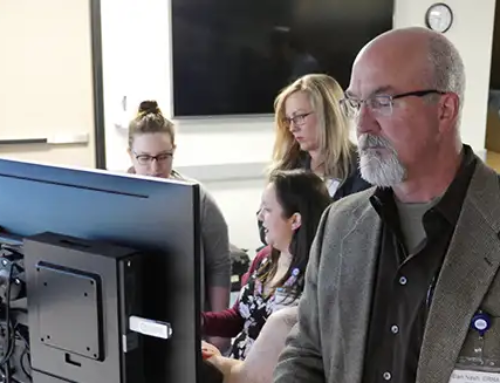
Point of care ultrasound, or POCUS, is emerging as a more and more beneficial tool with the number of applications that can be used to diagnose and treat patients effectively, something Maverick Medical Education is passionate about. Of particular interest is the ways POCUS performs in regards to pediatric medicine, particularly in emergency settings. Overall, ultrasound waves are safer for children by reducing their exposure to radiation from other imaging options. Additionally, the resolution can be tweaked and adjusted for the developmental age of the child at the bedside. Further, there are specific cases where POCUS can assist medical professionals in the patients they meet.
- Using Focused Cardiac Ultrasound (FOCUS)- When a patient arrives in cardiac arrest, every second is vital. It is not uncommon to have to delay imaging of the heart while life saving measures are being implemented. Through the use of FOCUS, chest compressions and other types of resuscitation can continue while images of the heart are being acquired, leading to a faster diagnosis and quicker treatment.
- Rapid Ultrasound for Shock and Hypotension (RUSH)- When a patient, adult or child, presents with shock, there are a number of organs that need examination. With the development of RUSH, this exam can take place in two minutes and will give doctors the information they need to make the best decisions.
- Vascular Access- According to Beckers Hospital, over 200 million peripheral intravenous catheters and 3-5 million central venous catheters are placed annually in the United States. For safety and general comfort, particularly for children, approaching the placement of these is greatly aided by ultrasound guidance, in opposition to using landmarks alone.
- Guided Nerve Blocks- Reducing a child’s exposure to opioids for pain relief is imperative to their health for a number of reasons. By using ultrasound to guide a nerve block for localized pain relief, not only are you reducing the negative effects of opioids, but there is often a superior level of pain relief experienced.
- Pneumonia Diagnosis- Again furthering the efforts to reduce a child’s exposure to radiation when unneeded, ultrasound is proving an effective way to diagnose pneumonia and to distinguish between viral and bacterial pneumonia, limiting the prescription of unnecessary antibiotics.
- Imaging for Intussusception- POCUS has already become the standard diagnosis method for Ileocolic intussusception. The shift away from contrast or air enema is proving accurate in pediatric patients.
- Managing Soft-tissue Infections- Determining the difference between cellulitis and abscess is difficult and can often be misdiagnosed or undertreated. With the use of ultrasound, in addition to physical examination, increases the specificity by 10-15%.
- Diagnosing and Treating Hip Pain- Pediatric patients are not always willing to communicate and often are unable to communicate the magnitude, source, or location of their pain. When using POCUS, medical professionals have found success in evaluating hip effusion and also in guiding hip arthrocentesis.
- Detection of Pyloric Stenosis- POCUS was studied side-by-side with radiology in identifying and measuring hypertrophic pyloric stenosis. The success rate was near perfect with all 60 cases showing consistent data.
- Diagnosis of Pneumothorax and Guiding Treatment- In neonates that are critically ill, clinical evaluation yields an 84% sensitivity and 56% specificity. In contrast, ultrasound has yielded a 100% accuracy and, on average, takes less than 6 minutes to perform. This accuracy rate and savings in time allows for treatment to occur quicker and can save lives.
Not surprising for our team at Maverick Medical Education, these are only a few of the ways POCUS is revolutionizing the medical field. By training more individuals on how to use the equipment and to make effective diagnoses and treatment plans with POCUS, our hospitals will be better equipped to care for our patients. To learn more about our course, see our course schedule or contact us today.




